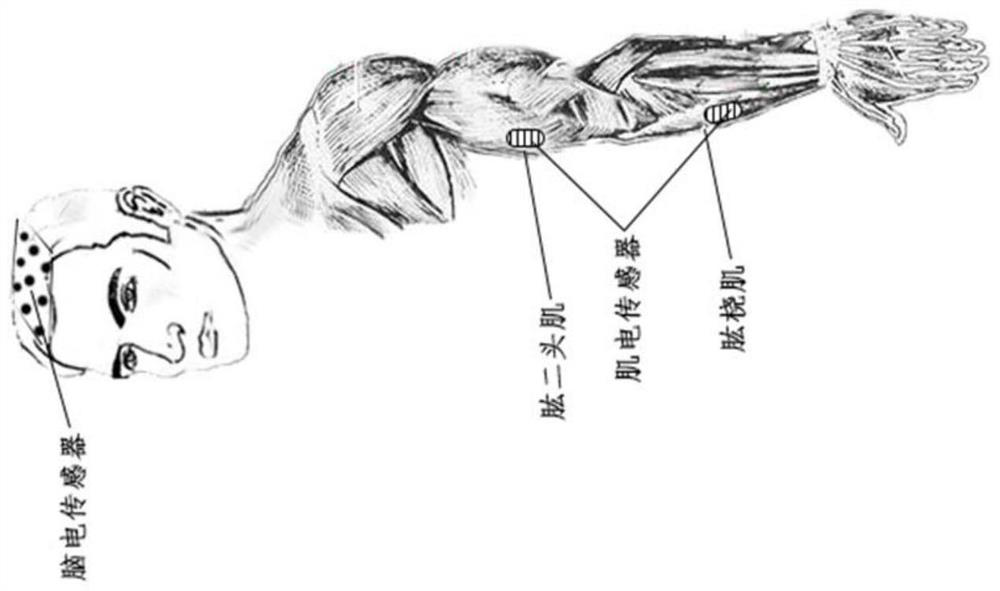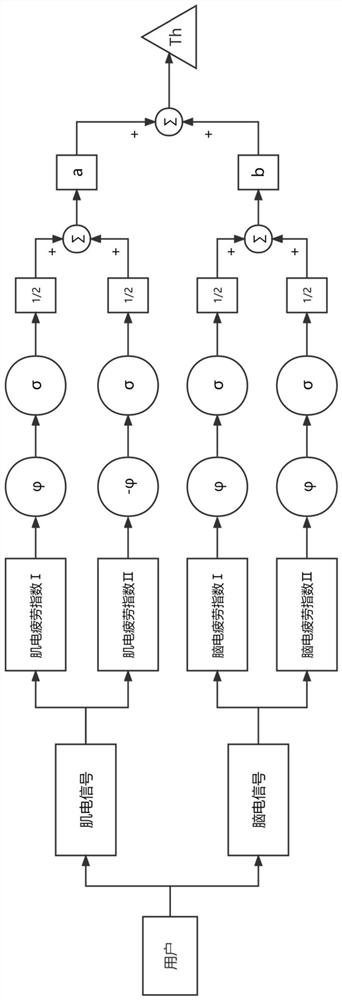Fatigue detection method based on multi-information fusion
A multi-information fusion and fatigue detection technology, applied in the field of fatigue detection, can solve the problems of single detection, not taking into account the differences in signal characteristics of different people, one-sidedness, etc., and achieve a comprehensive effect of fatigue detection
- Summary
- Abstract
- Description
- Claims
- Application Information
AI Technical Summary
Problems solved by technology
Method used
Image
Examples
Embodiment
[0051] The present invention provides a fatigue detection method based on multi-information fusion, which can fuse information such as myoelectric signals and electroencephalographic signals to realize fatigue detection in multi-environmental states.
[0052] The fatigue detection method specifically includes the following steps:
[0053] 1. EMG signal analysis
[0054] The EMG signals EMG_RAW1 and EMG_RAW2 at the biceps brachii and brachioradialis of the user's arm are extracted by the EMG sensor. The original EMG signals EMG_RAW1 and EMG_RAW2 are filtered with a 20-500Hz Butterworth bandpass filter to obtain EMG_F1 and EMG_F2.
[0055] Calculate the first myoelectric fatigue index F IEMG , the present invention is defined as:
[0056]
[0057] In the formula, EMG_F1 k , EMG_F2 k is the amplitude of the kth sampling point of the EMG signals EMG_F1 and EMG_F2, and N is the length of the sampling point.
[0058] According to the Wiener-Sinchin theorem, the power spectr...
PUM
 Login to View More
Login to View More Abstract
Description
Claims
Application Information
 Login to View More
Login to View More - R&D
- Intellectual Property
- Life Sciences
- Materials
- Tech Scout
- Unparalleled Data Quality
- Higher Quality Content
- 60% Fewer Hallucinations
Browse by: Latest US Patents, China's latest patents, Technical Efficacy Thesaurus, Application Domain, Technology Topic, Popular Technical Reports.
© 2025 PatSnap. All rights reserved.Legal|Privacy policy|Modern Slavery Act Transparency Statement|Sitemap|About US| Contact US: help@patsnap.com



